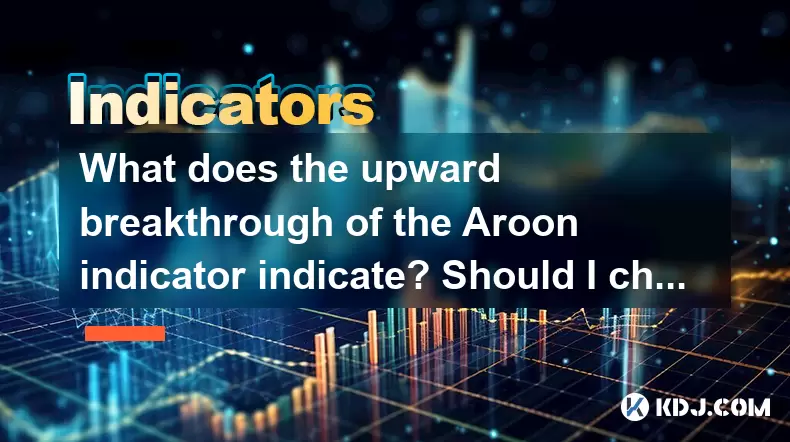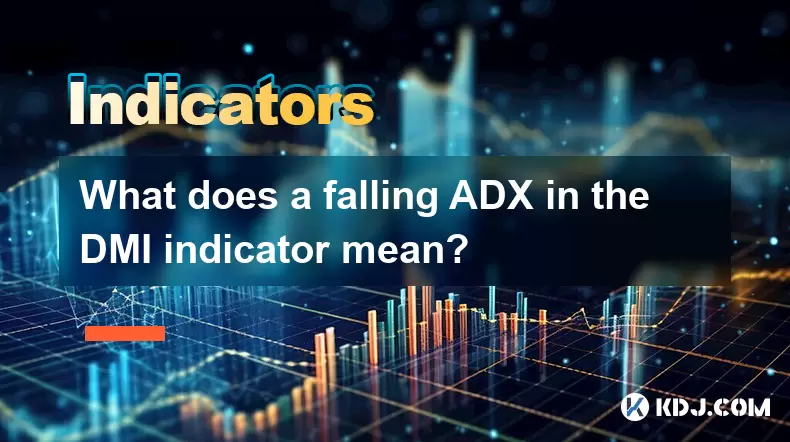-
 Bitcoin
Bitcoin $116700
0.24% -
 Ethereum
Ethereum $3973
4.34% -
 XRP
XRP $3.283
7.68% -
 Tether USDt
Tether USDt $1.000
0.01% -
 BNB
BNB $789.8
2.27% -
 Solana
Solana $176.2
3.31% -
 USDC
USDC $0.9999
0.00% -
 Dogecoin
Dogecoin $0.2238
5.14% -
 TRON
TRON $0.3389
-0.51% -
 Cardano
Cardano $0.7907
4.03% -
 Stellar
Stellar $0.4527
10.02% -
 Hyperliquid
Hyperliquid $41.07
4.27% -
 Sui
Sui $3.794
1.77% -
 Chainlink
Chainlink $19.49
10.40% -
 Bitcoin Cash
Bitcoin Cash $580.9
0.74% -
 Hedera
Hedera $0.2617
4.32% -
 Avalanche
Avalanche $23.41
3.67% -
 Ethena USDe
Ethena USDe $1.001
-0.03% -
 Litecoin
Litecoin $122.4
1.38% -
 Toncoin
Toncoin $3.364
1.49% -
 UNUS SED LEO
UNUS SED LEO $8.988
0.37% -
 Shiba Inu
Shiba Inu $0.00001295
2.82% -
 Uniswap
Uniswap $10.62
5.75% -
 Polkadot
Polkadot $3.922
4.46% -
 Dai
Dai $1.000
0.01% -
 Bitget Token
Bitget Token $4.494
2.15% -
 Monero
Monero $268.0
-1.30% -
 Cronos
Cronos $0.1523
3.68% -
 Pepe
Pepe $0.00001127
4.43% -
 Aave
Aave $285.4
4.85%
What does the upward breakthrough of the Aroon indicator indicate? Should I chase it when the trend strength suddenly increases?
The Aroon indicator's upward breakthrough signals a strong bullish trend in crypto markets, but traders should confirm with volume and other indicators before chasing the trend.
Jun 01, 2025 at 01:56 pm

The Aroon indicator is a popular technical analysis tool used by traders within the cryptocurrency market to identify trends and potential trend changes. This indicator consists of two lines: the Aroon-Up and the Aroon-Down, which measure the time elapsed since the last high or low over a given period, typically 14 days. When these lines interact in specific ways, they can signal significant market movements. One such movement is the upward breakthrough of the Aroon indicator, which can be a crucial signal for traders.
Understanding the Aroon Indicator
The Aroon indicator is designed to help traders determine the strength and direction of a trend. The Aroon-Up line measures the number of periods since the last high, while the Aroon-Down line measures the number of periods since the last low. Both lines are scaled from 0 to 100, with 100 indicating a strong trend in the respective direction.
- Aroon-Up: This line is calculated as (Number of periods - Number of periods since the last high) / Number of periods 100.
- Aroon-Down: This line is calculated as (Number of periods - Number of periods since the last low) / Number of periods 100.
What Does an Upward Breakthrough Indicate?
An upward breakthrough of the Aroon indicator occurs when the Aroon-Up line crosses above the Aroon-Down line, and often, the Aroon-Up line reaches or exceeds the 70 level. This movement suggests that a new bullish trend may be forming, as the market is making new highs more frequently than new lows.
When the Aroon-Up line remains high (typically above 70) and the Aroon-Down line stays low (typically below 30), it indicates a strong upward trend. This scenario is a clear signal for traders to consider entering long positions, as it suggests that the bullish momentum is robust and likely to continue.
Should You Chase the Trend When the Strength Suddenly Increases?
When the trend strength suddenly increases, as indicated by the Aroon-Up line rising sharply or crossing above the Aroon-Down line, it can be tempting to chase the trend. However, it's important to approach this situation with caution and a well-thought-out strategy.
Chasing a trend, especially after a sudden increase in strength, can be risky. The market may already have moved significantly, and late entries can result in buying at peak prices, which increases the risk of a subsequent pullback. Therefore, it's crucial to consider additional factors before making a decision.
Additional Factors to Consider
Before deciding to chase a trend after an upward breakthrough of the Aroon indicator, consider the following:
- Volume: Confirm the trend with high trading volume. A strong upward trend accompanied by increasing volume is more likely to sustain its momentum.
- Other Indicators: Use other technical indicators, such as the Relative Strength Index (RSI) or Moving Average Convergence Divergence (MACD), to confirm the trend strength and avoid false signals.
- Market Sentiment: Assess the overall market sentiment through news, social media, and other sentiment analysis tools. Positive sentiment can support a bullish trend.
- Risk Management: Always have a clear risk management strategy in place. Set stop-loss orders to protect against unexpected reversals.
How to Use the Aroon Indicator for Trading
To effectively use the Aroon indicator for trading within the cryptocurrency market, follow these steps:
- Set Up the Indicator: Add the Aroon indicator to your trading platform. Most platforms allow you to customize the period, typically set to 14 days.
- Monitor the Lines: Watch for the Aroon-Up line to cross above the Aroon-Down line. A strong bullish signal occurs when the Aroon-Up line reaches or exceeds 70.
- Confirm the Signal: Look for confirmation from other indicators and high trading volume to ensure the trend is robust.
- Enter the Trade: Once the signal is confirmed, consider entering a long position. Set your entry price, stop-loss, and take-profit levels based on your risk management strategy.
- Monitor and Adjust: Continuously monitor the market and adjust your positions as necessary. If the Aroon-Up line begins to decline and the Aroon-Down line starts to rise, it may indicate a weakening trend.
Practical Example
Let's consider a practical example using Bitcoin (BTC) to illustrate how to use the Aroon indicator for trading:
- Scenario: You are monitoring the daily chart of Bitcoin, and you notice that the Aroon-Up line has crossed above the Aroon-Down line, with the Aroon-Up line reaching 80 and the Aroon-Down line at 20.
- Confirmation: You check the trading volume, which shows a significant increase compared to the previous days. Additionally, the RSI is at 65, indicating strong but not overbought conditions.
- Entry: Based on this information, you decide to enter a long position at the current market price of $40,000. You set a stop-loss at $38,000 to limit your risk and a take-profit at $45,000 to secure profits.
- Monitoring: You continue to monitor the Aroon lines and other indicators. If the Aroon-Up line starts to decline and the Aroon-Down line begins to rise, you may consider closing your position or adjusting your stop-loss to lock in profits.
FAQs
Q: Can the Aroon indicator be used for short-term trading in cryptocurrencies?
A: Yes, the Aroon indicator can be used for short-term trading by adjusting the period setting to a shorter timeframe, such as 7 days or even 5 days. This allows traders to capture more frequent signals and capitalize on short-term trends. However, shorter periods may result in more false signals, so it's essential to use additional confirmation tools.
Q: How can I avoid false signals when using the Aroon indicator?
A: To avoid false signals, always use the Aroon indicator in conjunction with other technical indicators, such as the RSI or MACD, and monitor trading volume. Additionally, consider the overall market context and sentiment to ensure the signals align with broader market trends.
Q: Is the Aroon indicator suitable for all types of cryptocurrencies?
A: The Aroon indicator can be applied to any cryptocurrency, but its effectiveness may vary depending on the liquidity and volatility of the asset. For highly volatile cryptocurrencies, the Aroon indicator may generate more signals, which require careful confirmation to avoid false positives. For more stable cryptocurrencies, the indicator may provide more reliable signals due to smoother price movements.
Q: What are the limitations of the Aroon indicator in cryptocurrency trading?
A: The Aroon indicator, like any technical analysis tool, has limitations. It may generate false signals during periods of consolidation or when the market is ranging. Additionally, the indicator can be late in signaling trend changes, as it relies on historical data. Therefore, it's crucial to use the Aroon indicator as part of a comprehensive trading strategy that includes other tools and risk management techniques.
Disclaimer:info@kdj.com
The information provided is not trading advice. kdj.com does not assume any responsibility for any investments made based on the information provided in this article. Cryptocurrencies are highly volatile and it is highly recommended that you invest with caution after thorough research!
If you believe that the content used on this website infringes your copyright, please contact us immediately (info@kdj.com) and we will delete it promptly.
- Coinbase, Cosmos, and dYdX: Navigating the Crypto Currents
- 2025-08-09 06:30:16
- BNB Price, Altcoins, and Predictions: What's the Buzz?
- 2025-08-09 06:30:16
- Crypto Presale Projects Primed for Gains in 2025: A New Yorker's Take
- 2025-08-09 06:50:15
- Ruvi AI: The Millionaire Maker Poised for a Price Spike?
- 2025-08-09 06:50:15
- MAGACOIN FINANCE: August 2025's Standout Presale - Is it the Next Big Thing in Crypto Finance?
- 2025-08-09 06:55:27
- Token Buybacks, Onchain Data, and Developers: What's Buzzing in Crypto
- 2025-08-09 05:10:15
Related knowledge

When the J line in the KDJ indicator suddenly turns downward after being continuously overbought, does it indicate a top?
Aug 09,2025 at 06:35am
Understanding the KDJ Indicator and Its ComponentsThe KDJ indicator is a momentum oscillator widely used in cryptocurrency technical analysis to ident...

What does it mean when the TRIX indicator suddenly diverges downward after a long period of convergence?
Aug 09,2025 at 12:56am
Understanding the TRIX Indicator in Cryptocurrency TradingThe TRIX indicator, or Triple Exponential Average, is a momentum oscillator used in technica...

Why is the rise limited after a MACD bottoming divergence?
Aug 09,2025 at 12:07am
Understanding MACD Bottoming Divergence in Cryptocurrency TradingThe MACD (Moving Average Convergence Divergence) is a widely used technical indicator...

What does it mean when the OBV continues to rise but the price is trading sideways?
Aug 08,2025 at 10:35pm
Understanding On-Balance Volume (OBV)On-Balance Volume (OBV) is a technical indicator that uses volume flow to predict changes in stock or cryptocurre...

What does a falling ADX in the DMI indicator mean?
Aug 09,2025 at 03:16am
Understanding the ADX and DMI Indicator FrameworkThe DMI (Directional Movement Index) is a technical analysis tool developed by J. Welles Wilder to id...

What does a double top pattern on the Williams oscillator mean?
Aug 09,2025 at 02:36am
Understanding the Williams %R OscillatorThe Williams %R oscillator is a momentum indicator developed by Larry Williams to identify overbought and over...

When the J line in the KDJ indicator suddenly turns downward after being continuously overbought, does it indicate a top?
Aug 09,2025 at 06:35am
Understanding the KDJ Indicator and Its ComponentsThe KDJ indicator is a momentum oscillator widely used in cryptocurrency technical analysis to ident...

What does it mean when the TRIX indicator suddenly diverges downward after a long period of convergence?
Aug 09,2025 at 12:56am
Understanding the TRIX Indicator in Cryptocurrency TradingThe TRIX indicator, or Triple Exponential Average, is a momentum oscillator used in technica...

Why is the rise limited after a MACD bottoming divergence?
Aug 09,2025 at 12:07am
Understanding MACD Bottoming Divergence in Cryptocurrency TradingThe MACD (Moving Average Convergence Divergence) is a widely used technical indicator...

What does it mean when the OBV continues to rise but the price is trading sideways?
Aug 08,2025 at 10:35pm
Understanding On-Balance Volume (OBV)On-Balance Volume (OBV) is a technical indicator that uses volume flow to predict changes in stock or cryptocurre...

What does a falling ADX in the DMI indicator mean?
Aug 09,2025 at 03:16am
Understanding the ADX and DMI Indicator FrameworkThe DMI (Directional Movement Index) is a technical analysis tool developed by J. Welles Wilder to id...

What does a double top pattern on the Williams oscillator mean?
Aug 09,2025 at 02:36am
Understanding the Williams %R OscillatorThe Williams %R oscillator is a momentum indicator developed by Larry Williams to identify overbought and over...
See all articles

























































































